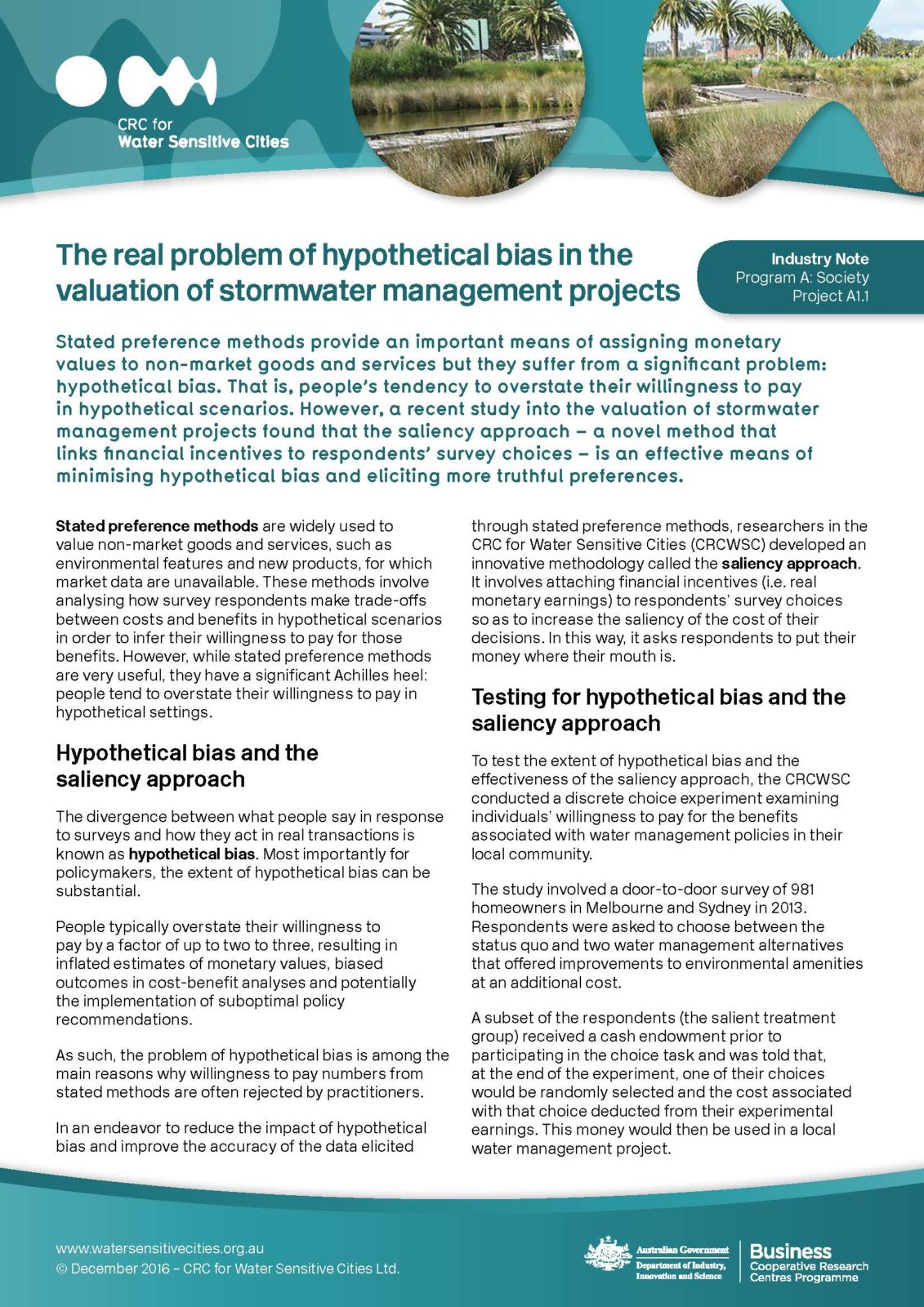CRCWSC Industry Note (2016): The real problem of hypothetical bias in the valuation of stormwater management projects
Stated preference methods provide an important means of assigning monetary values to non-market goods and services but they suffer from a significant problem: hypothetical bias. That is, people’s tendency to overstate their willingness to pay in hypothetical scenarios. However, a recent study into the valuation of stormwater management projects found that the saliency approach – a novel method that links financial incentives to respondents’ survey choices – is an effective means of minimising hypothetical bias and eliciting more truthful preferences.
